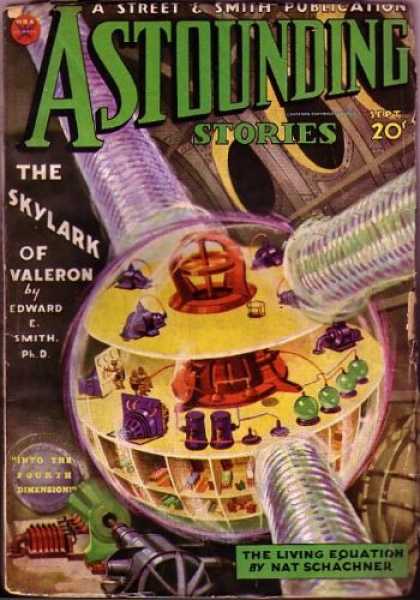|
LITR 4368 Literature of the Future |
Sample answers
for Essay 2:
|
 |
Ashley Idema
Narratives of the Future: Making Women More Badass
In my second midterm essay, I started to discuss how I’ve noticed in our
readings of Narratives of the Future that the female characters created by male
authors are less than stellar. Now that our course has come to a close, I still
find this to be true. Female authors still create better female characters.
Until a few decades ago, science fiction was primarily a male dominated
genre. The field was revolutionary for men. Heroes in the science fiction world
didn’t have to be conventional; they no longer had to fit the Prince Charming
mold. Science fiction leads could be bald, middle-aged men, or even scrawny,
teenage boys with acne and a whole lot of brain power. Unfortunately, parts for
women were usually “over-sexualized alien” or your standard, “damsel in
distress,” but in outer space. With the recent influx of superhero and
post-apocalyptic dystopian films at the box-office, women are finally starting
to stand out in less predictable roles. This is partially thanks to female
authors who generate worthy female characters.
Octavia Butler never fails at producing unconventional and inspiring
female characters. The protagonist in Butler’s novel,
Parable of the Sower,
isn’t a blonde-haired, blue-eyed princess. Contrarily, Lauren has dark hair,
dark eyes, and dark skin. What she looks like doesn’t necessarily matter; it’s
her actions that make her important. Lauren doesn’t lie around all day wishing
someone would come along and save her; instead, Lauren decides that she needs to
be the one who saves the world. Lauren brings people together, giving them a
sense of community and hope in a world full of chaos. Rye from “Speech Sounds”
is another untraditional character of Butler’s. Like Lauren, Rye isn’t your
typical heroine. Shockingly, Rye isn’t a young girl; she’s middle-aged. Rye is
also incredibly smart. Most importantly, Rye doesn’t need a man to protect her;
she can protect herself.
Aubrey Ferber’s “Drapes and Folds,” is a high tech, dystopian narrative
whose characters are all female. The story focuses on women bonding together.
After an epidemic of breast cancer, “Women developed the one shoulder
hike greeting during the Epidemic to emphasize our chests and our unity”
(Schinto 126). Even though cancer has destroyed their breasts and reproductive
organs, it doesn’t make these women any less female. For those who can’t give
birth anymore, there is a new alternative. In her 2013 final essay, “A False
Future,” Tina Le seems to be appalled by the narrative’s idea of the “NewOnes,”
but I think it’s wonderful that science has allowed for these women to still be
mothers. Pearl, the protagonist, is an elderly lady. She has a “granddaughter”
named Xena who is part human and part robot. Pearl and Xena are anything but
conventional female characters. Xena was created from genetics donated by
Pearl’s daughter, Casey. Xena has never really taken to Pearl, or so she thinks.
Pearl associates her identity with fabric. When the government comes to take the
fabric away, Pearl discovers that Xena treasures the fabric too. Xena hides the
fabric in a compartment near her heart which bridges the generational (and
non-human) gap between the two.
Terry Bisson’s, “They’re made out
of Meat,” is probably my favorite story from this course. It’s short, sweet, and
to the point. It’s also very humbling. In this narrative, human beings are all
equal. We aren’t categorized and separated by our gender. The alien race from
this story doesn’t care who is male or who is female. To them, we are all the
same thing: meat. We’re all meat and that is the only thing that defines us.
